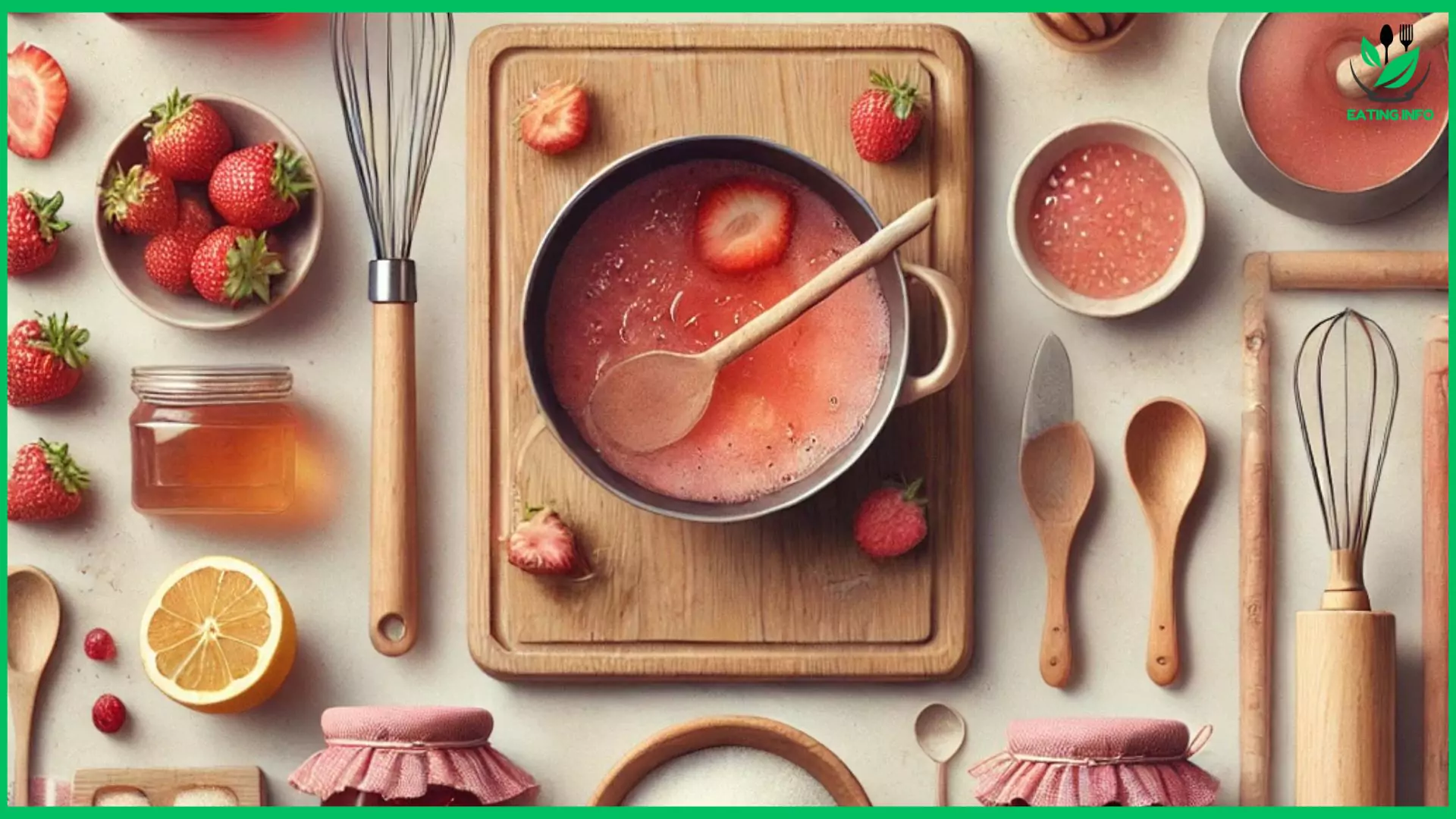Making homemade jam is one of the best ways to preserve your favorite fruits, but it is also a really fun, creative process that adds a personal touch to your kitchen creations. Advanced chefs and complete newbies alike will learn the whole process step-by-step. So let’s dive in and bring the sweetness of nature into your pantry!
Making homemade jam is more than just a culinary project; it’s actually an art form where you get to preserve vibrant flavors of fresh fruits at their seasonal peak. Unlike store-bought, homemade enables the person making it to use healthier ingredients, making it even tastier. They also make great presents for anyone who enjoys a good treat.
What You Will Need
Get all your ingredients and apparatus ready before beginning. You will need the following:
Ingredients:
Fresh fruit of your choice for example, strawberries, raspberries, peaches, or apricots
Granulated sugar
Lemon juice optional-to add a little acidity if desired
Pectin optional-see note below
Equipment
Large, heavy-bottomed pot
Wooden spoon or spatula
Ladle
Glass jars with lids, sterilized
Candy thermometer-optional
Funnel-to avoid accidents
How to Choose the Fruit
The key to making great jam is to use great fruit. This means using fresh, ripe fruits that have good flavor. Here’s what to consider:
Seasonal Fruits:
Seasonal fruits taste better and are cheaper, too. Berries in summer, apples in autumn, or citrus fruits in winter are just great options.
Best Fruits for Jam-Making:
Soft fruits such as strawberries, peaches, and raspberries are perfect. If firmer fruits, like apples or pears, are used, then longer cooking time is required to break them down.
Preparing the Fruit
Proper preparation is the key to a smooth, flavorful jam. Here’s how:
Cleaning:
Rinse your fruit under cold running water to remove dirt or pesticides.
Cutting:
Slice larger fruits like peaches or apples into small, even pieces so that they cook evenly.
Removing Pits and Seeds:
Remove pits, stems, and seeds when necessary. For berries, this step is not required, but for fruits like cherries or plums, it is.
Understanding Pectin
Pectin is the magic ingredient that helps jam attain that gel-like consistency.
Natural vs. Added Pectin:
Fruits like apples, citrus, and blackberries are rich in pectin, but others may need additional help from pectin supplements.
How It Works:
Pectin binds to sugar and acid during cooking until it forms a gel. No pectin-sugar-acid bond, and no jelly-like consistency in your jam.
Sugar: The Sweet Factor
Sugar does more than add sweetness to your jam; it’s a preservative and works toward the desired consistency.
Choosing Sugar:
For best results, use granulated sugar, but for those who experiment a little, brown sugar and other natural sweeteners will bring a different flavor profile.
Cooking the Jam
Now the fun part-fruits transformed into jam! Here’s how to do it:
Combine fruit and sugar in your pot.
Heat the mixture slowly, stirring constantly.
Add lemon juice and pectin if you’re using.
Simmer until it reaches your setting point. A good way of testing is placing a small dollop onto a cold plate-if this wrinkles when pushing, it is ready!
How to Sterilise the Jars
To avoid contamination, correctly sterilized jars are a priority.
Use hot, soapy water to wash jars and their lids.
Place in a very hot oven or boil in water for up to 10 minutes.
Until you’re ready to fill them, keep them warm.
Completed and sealed
Fill your sterilized jars with the hot jam, leaving a ¼-inch gap at the top. After cleaning the rims, firmly screw on the lids. To guarantee a vacuum seal, process the jars in a boiling water bath for ten minutes.
Cooling and Storing the Jam
Let the jars cool completely at room temperature. You’ll hear a satisfying “pop” as the seals form. Store your jam in a cool, dark place for up to a year.
Common Jam-Making Mistakes
Runny Jam:
Cook it a little longer or add more pectin.
Overly Thick Jam:
Add a splash of water and reheat gently.
Creative Jam Variations
Add a splash of excitement in your jam: add vanilla, cinnamon, or even a splash of balsamic vinegar. Fruit combinations such as strawberry-rhubarb or peach-ginger will provide unique flavorings.
Healthier Jam Options
You can reduce the sugar content by using low-sugar pectin or natural sweeteners like honey or maple syrup. These options are great for health-conscious jam lovers.
Uses of Homemade Jam
Homemade jam isn’t just for toast! Use it as a topping for yogurt, a filling for pastries, or a glaze for meats. The possibilities are endless.
The advantage of making your jam yourself is that you get to enjoy the flavors of the seasons all year round. With this guide, you’re well on your way to creating delicious, customized jams to delight your taste buds and amaze your loved ones. So go ahead and pick your fruits and happy cooking!
Frequently Asked Questions
Can I make jam without added pectin?
Yes, many fruits are naturally high in pectin and can be set without additives.
How long does homemade jam keep?
Jam can be kept in the pantry for up to a year, sealed properly, and kept well.
Is it possible to freeze homemade jam?
Of course! Just be sure and leave space at the top of the jar for expansion.
What is the best test to use for the jam to know that it is ready?
Using the wrinkle test on a cold plate or by testing the temperature around 220°F.
Can I make jam from frozen fruits?
Yes, frozen fruits work well, too. Just thaw and drain excess water before cooking.

